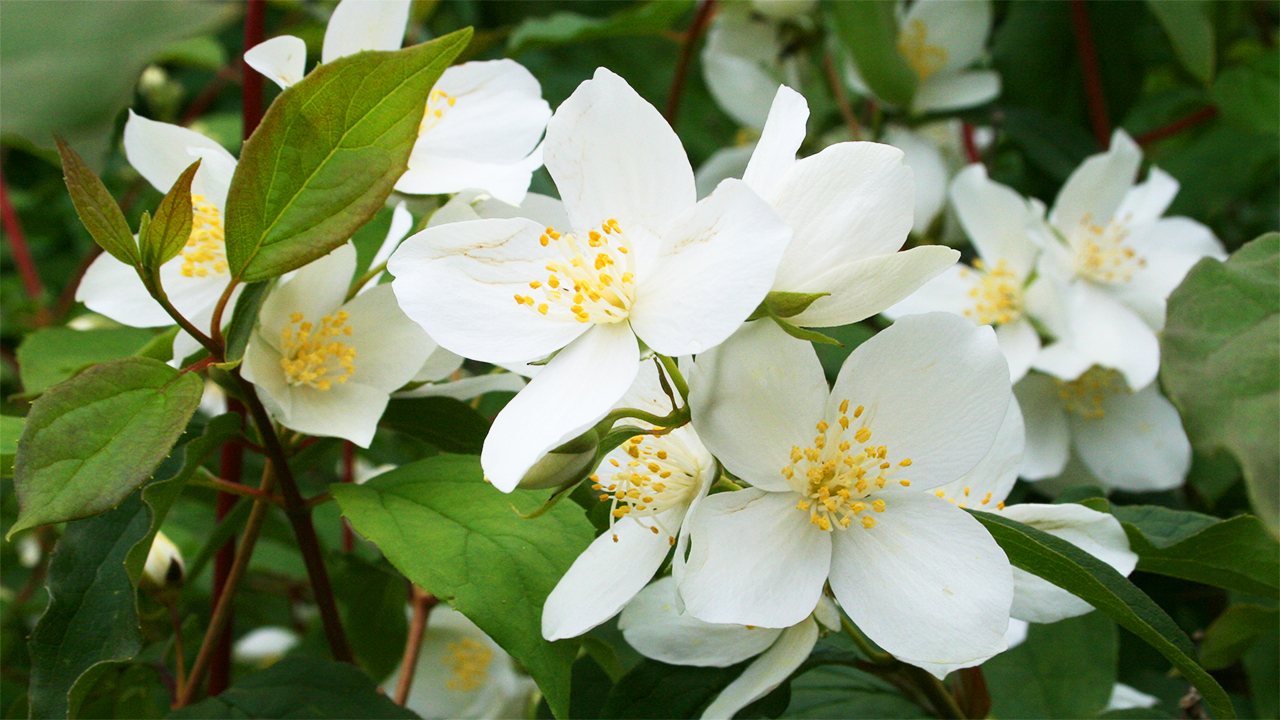Idaho's state flower, Philadelphus lewisii, commonly known as Lewis' mock-orange or syringa, is a captivating and fragrant symbol of the state's natural beauty.
Named after the explorer Meriwether Lewis, who first documented the plant during the Lewis and Clark Expedition, this deciduous shrub is celebrated for its stunning, white, four-petaled flowers that bloom in late spring to early summer.
The blossoms emit a sweet, citrus-like fragrance that has earned the plant its common name.
It thrives in a variety of habitats across Idaho, from riverbanks and canyons to mountain slopes and forest edges, showcasing its adaptability and resilience.
The plant typically reaches heights of 4 to 12 feet, with arching branches covered in dark green leaves.
Beyond its aesthetic appeal, Lewis’ mock-orange holds cultural significance for Native American tribes, who have historically used its bark and wood for crafting tools and its flowers for medicinal purposes.
As Idaho’s state flower, Philadelphus lewisii not only represents the state’s rich botanical diversity but also underscores the historical and cultural narratives intertwined with the region’s natural landscape.
Discover Beautiful Flowers, Expert Gardening Tips & Interesting Plant Science!
By submitting this form, you are consenting to receive marketing emails from: . You can revoke your consent to receive emails at any time by using the SafeUnsubscribe® link, found at the bottom of every email. Emails are serviced by Constant Contact

About The Author
John Bagnasco has been in the gardening industry for over 50 years, starting with a horticulture degree from Michigan State University and following a stint at Frank’s Nursery and Crafts in Detroit.
After publishing his first book “Plants for the Home Vol. I” in 1976, he moved to California to become regional manager and buyer for the Nurseryland division of Sunbelt Nursery Group.
He then became the head buyer for Armstrong Garden Centers based in Glendora, California. John had a part-time affiliation with Creative Promotions for ten years before joining them full-time in October 2000 as a senior editor and radio personality for Garden Compass.
John has also taught horticulture classes at Palomar College and San Diego State University.
He is the host of the DVD “The Essential Guide to Roses,” which also features Bryan Main and Bruce and Sharon Asakawa.
His most recent book is “Planting Designs for Cacti and Succulents”.
Currently, John is a co-host on “Garden America,” an interactive live gardening show that additionally provides podcasts of the broadcasts accessible on all major platforms.
You can contact John here.

